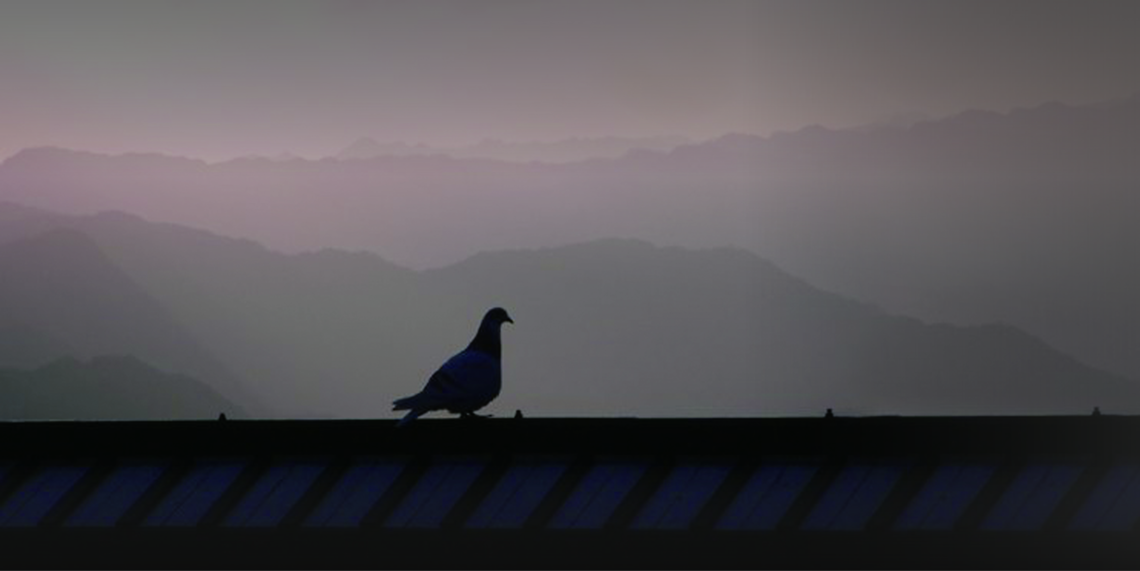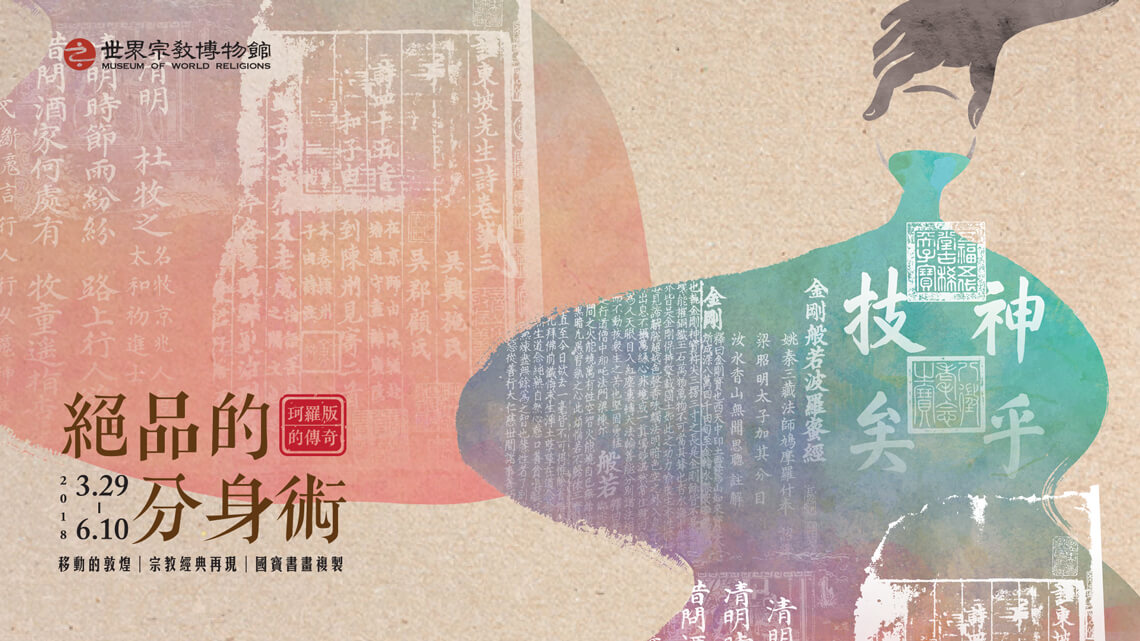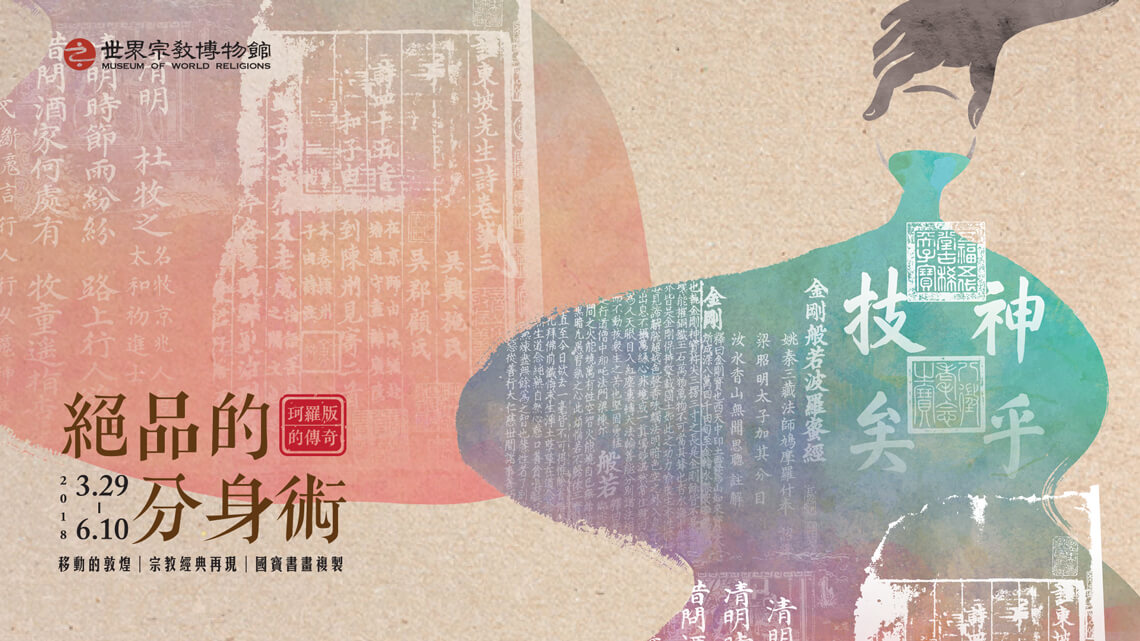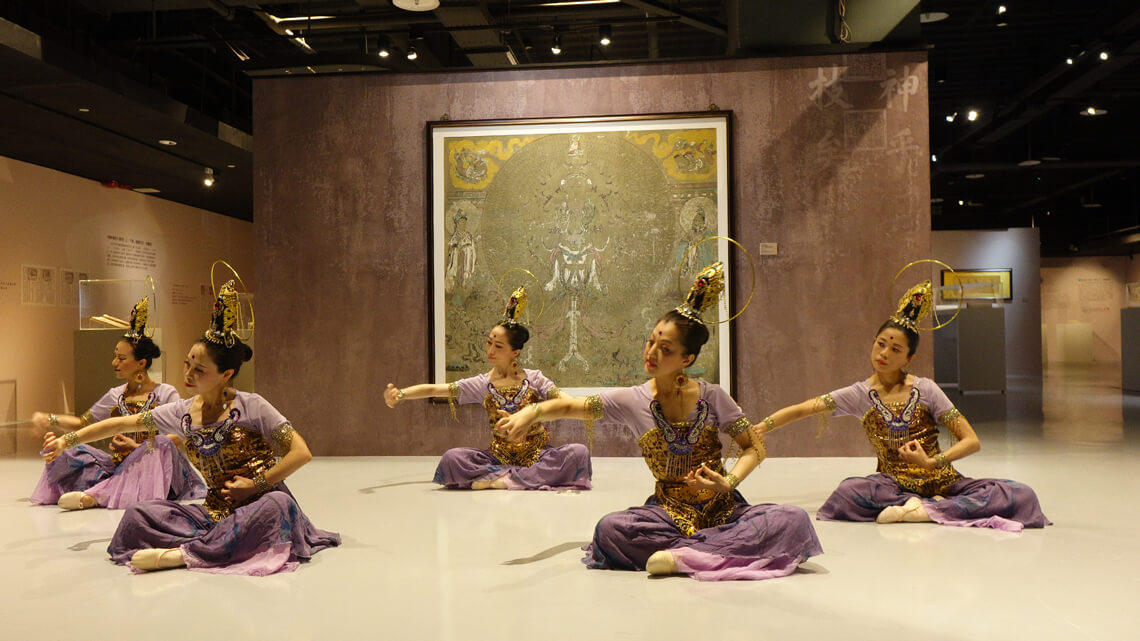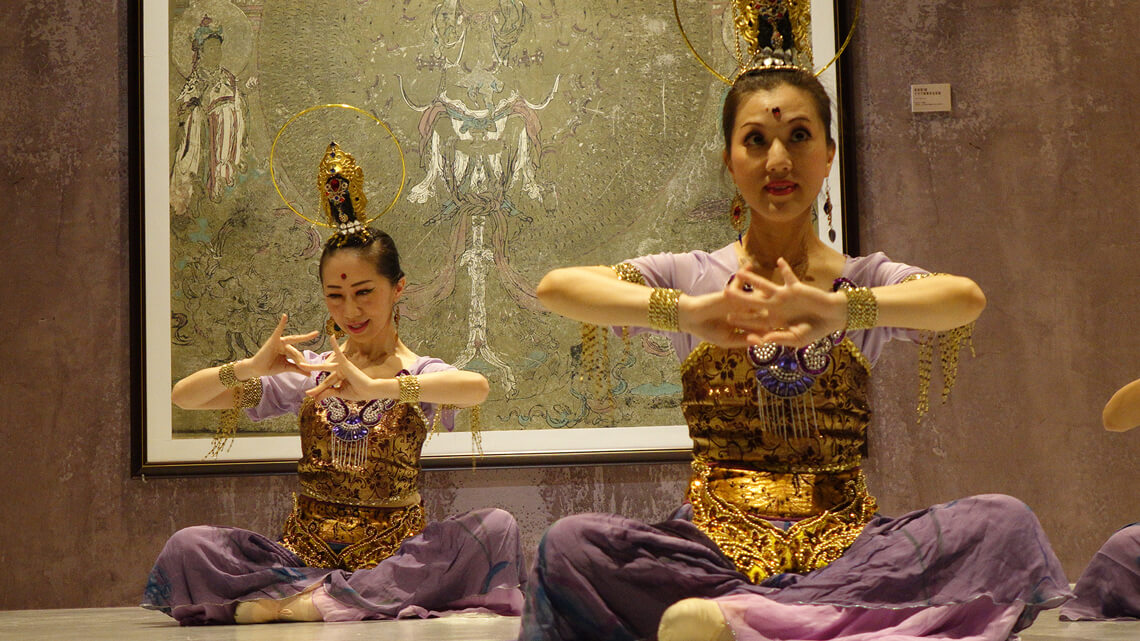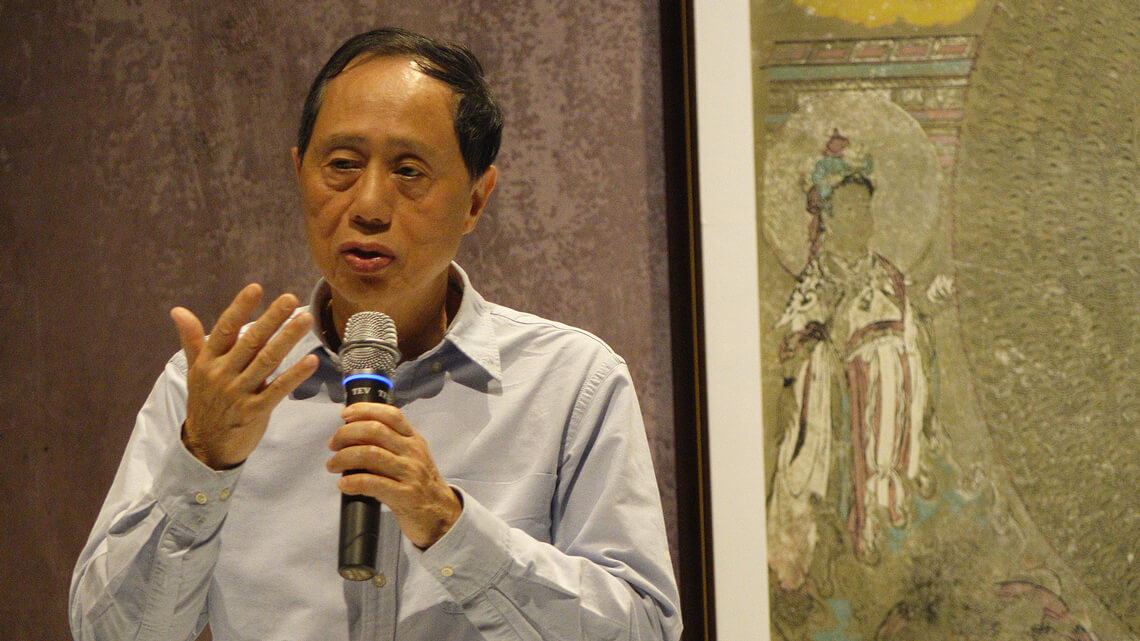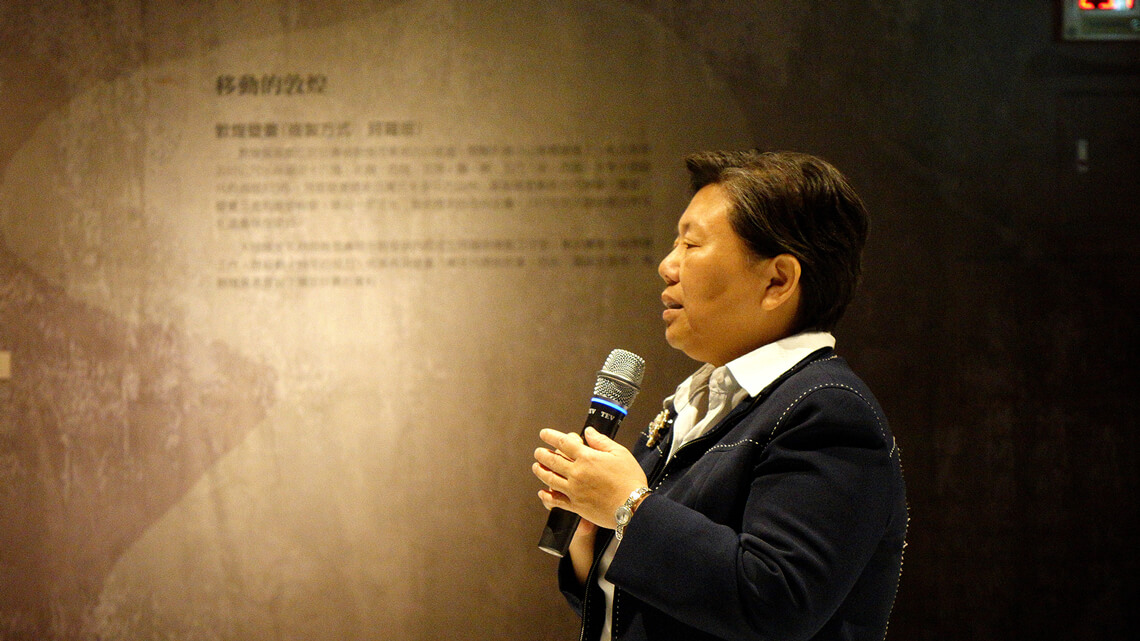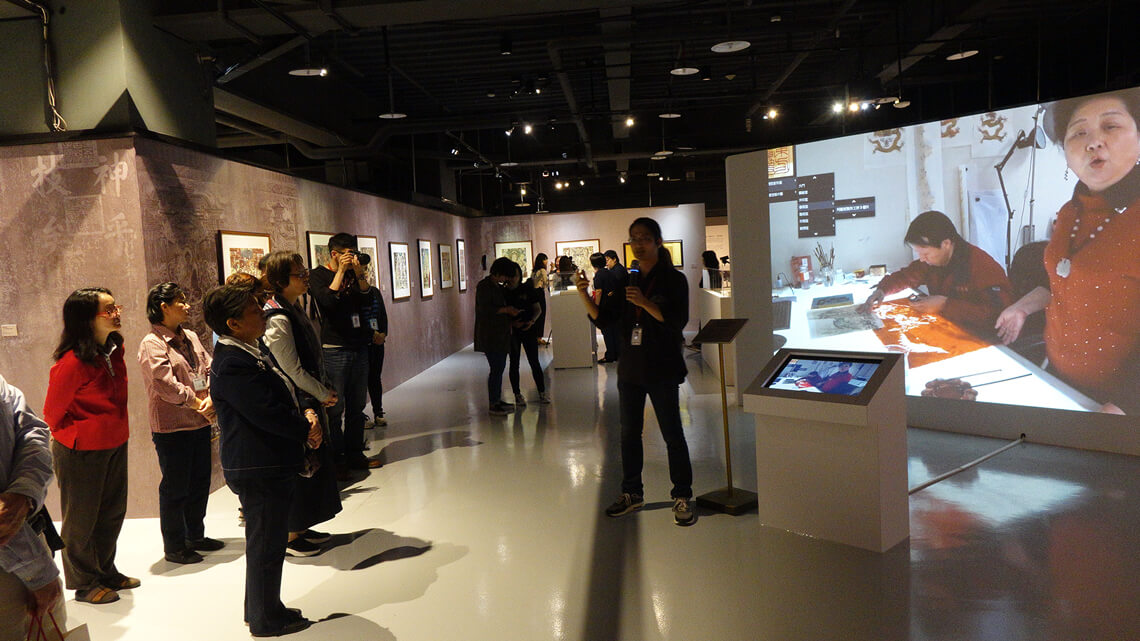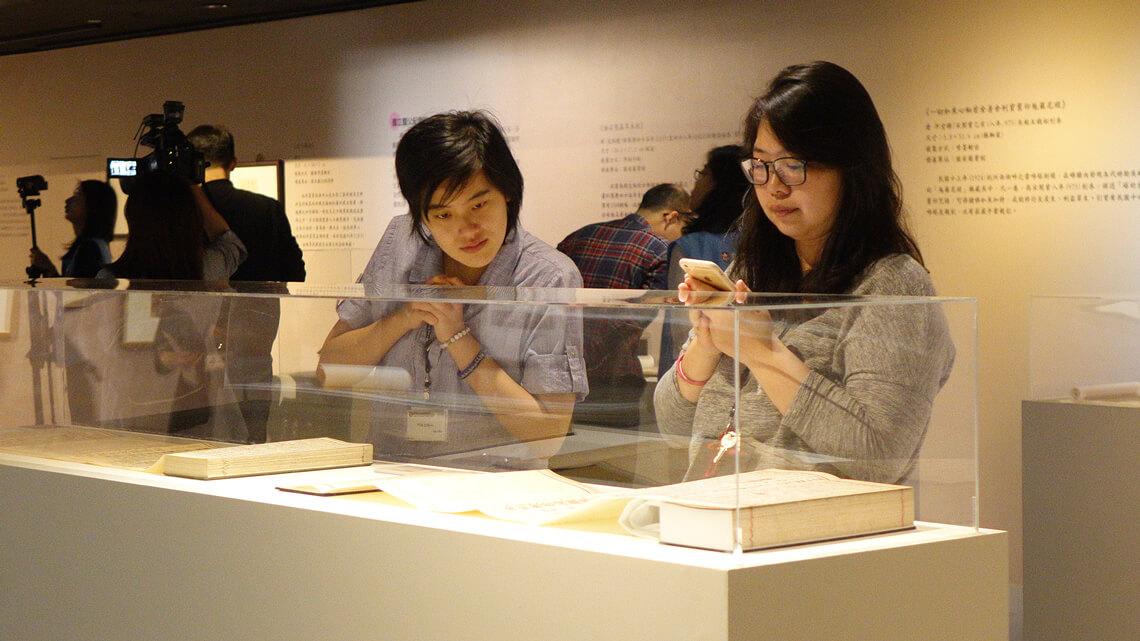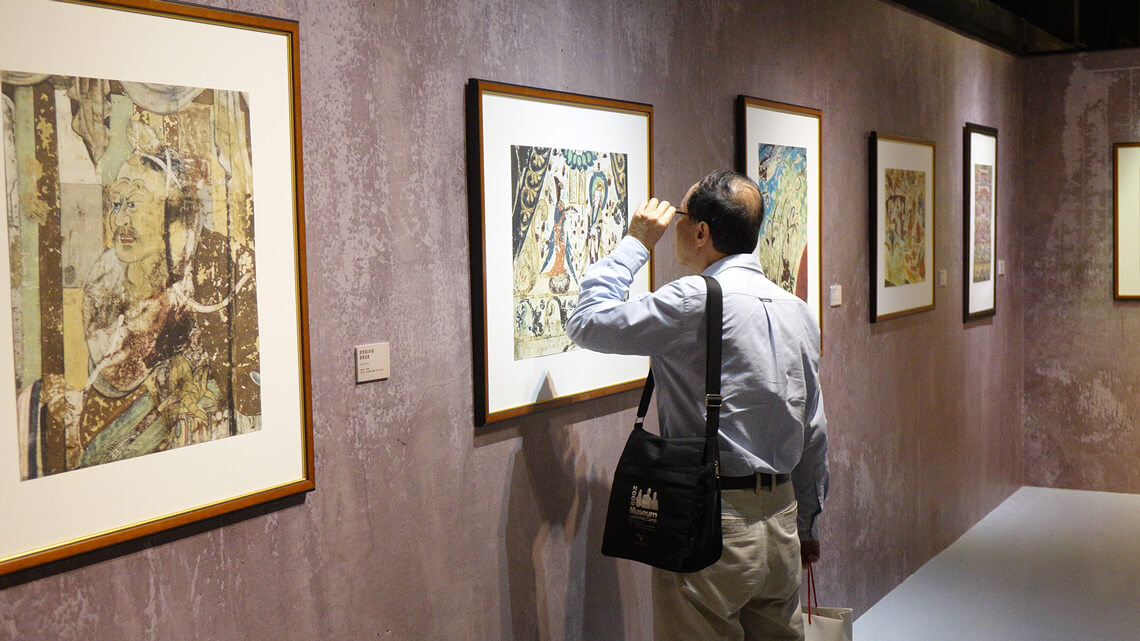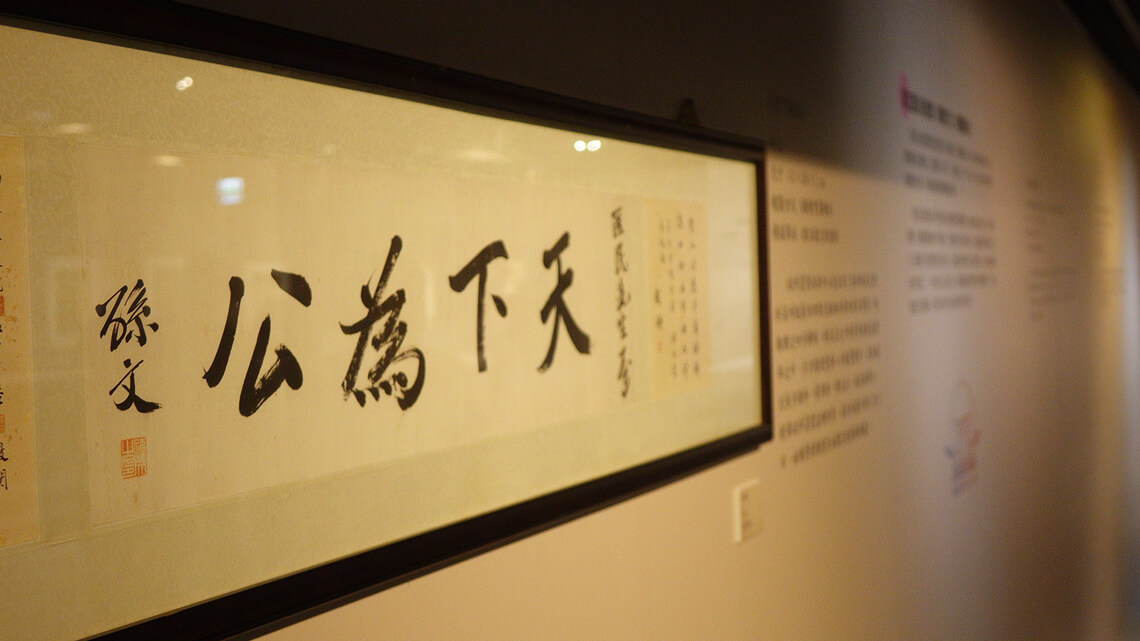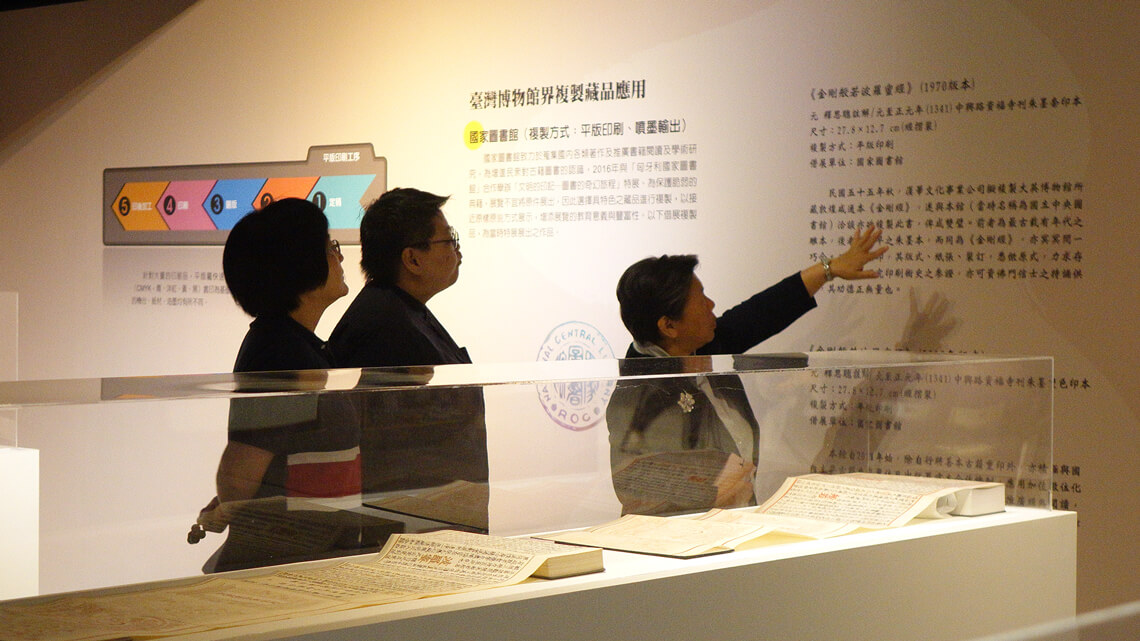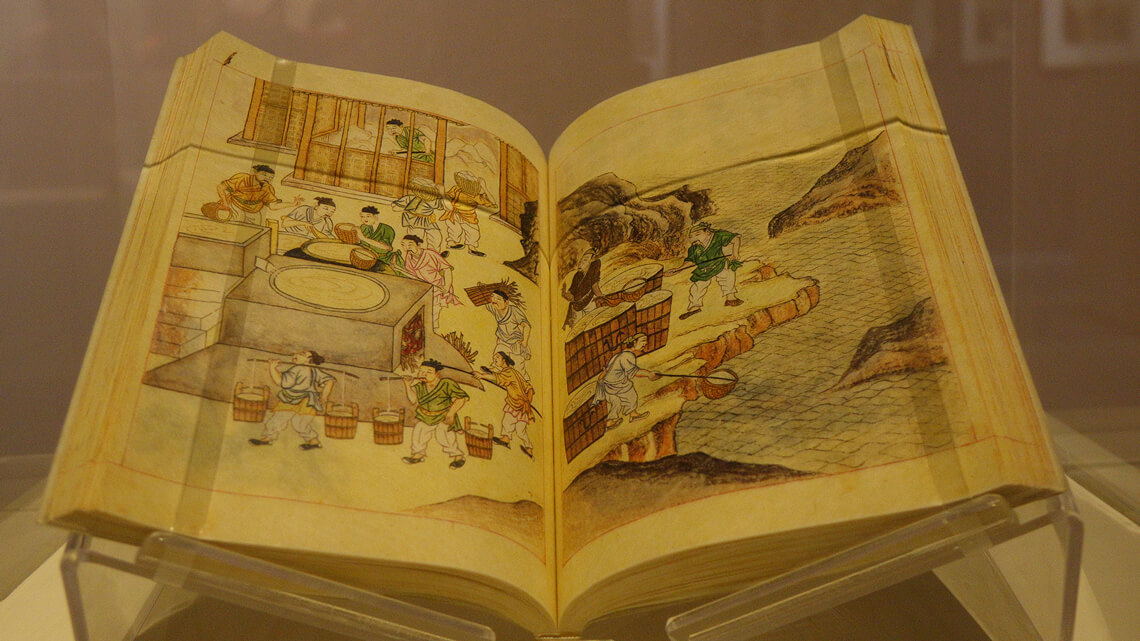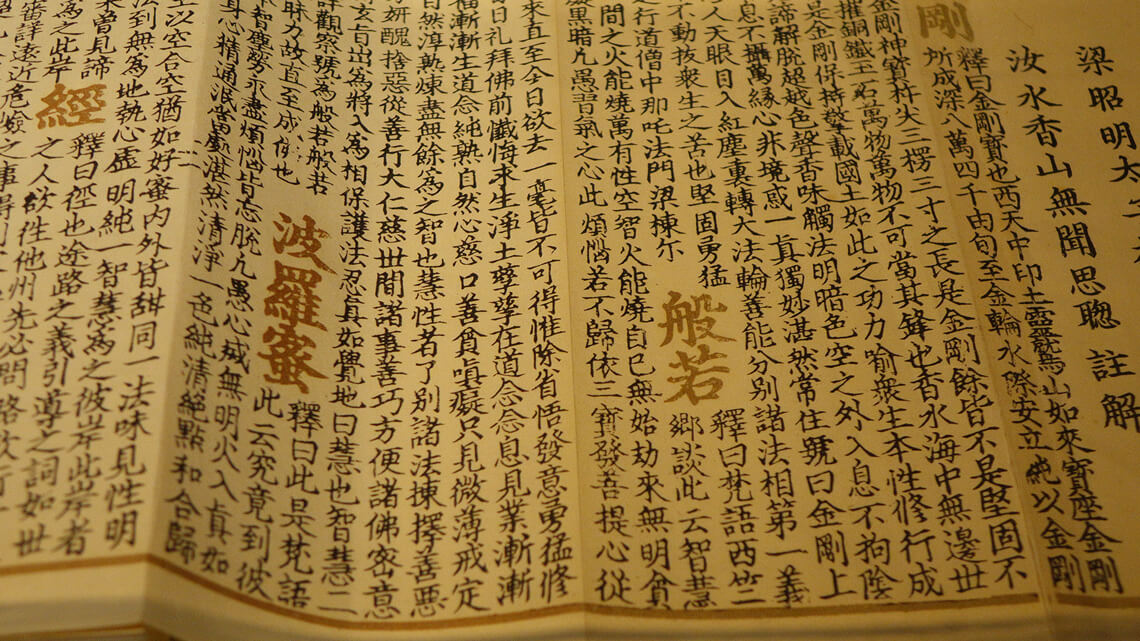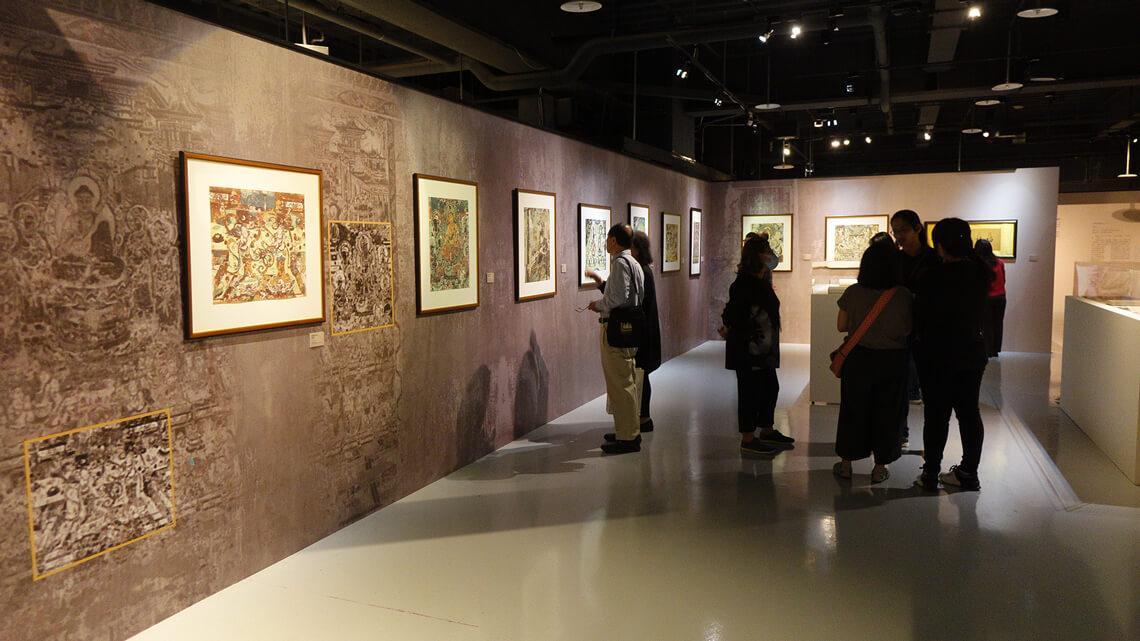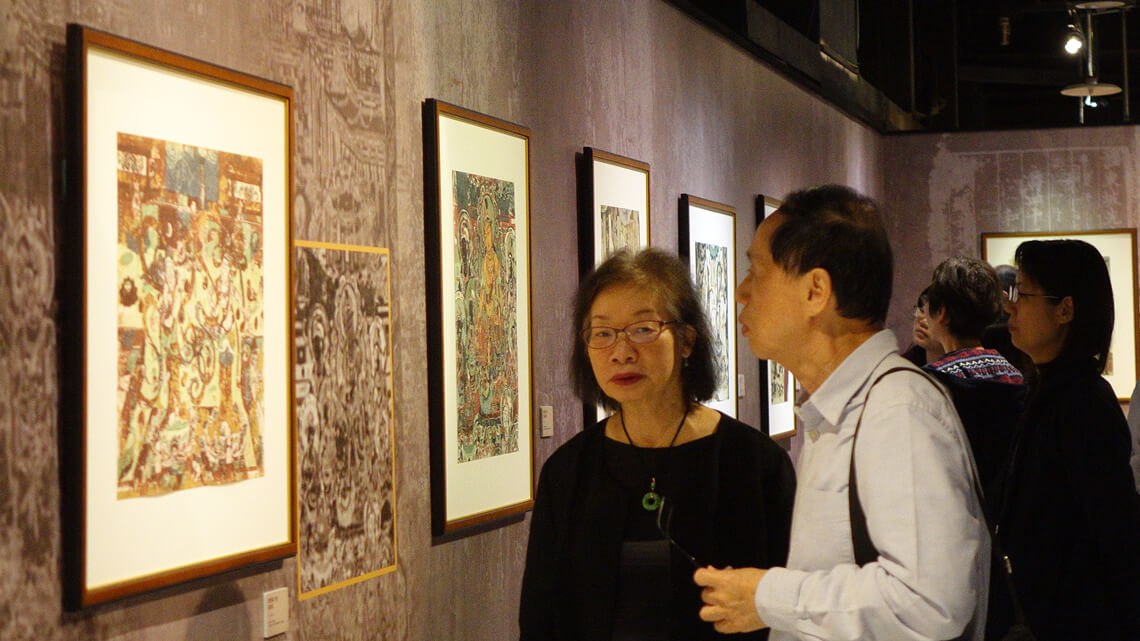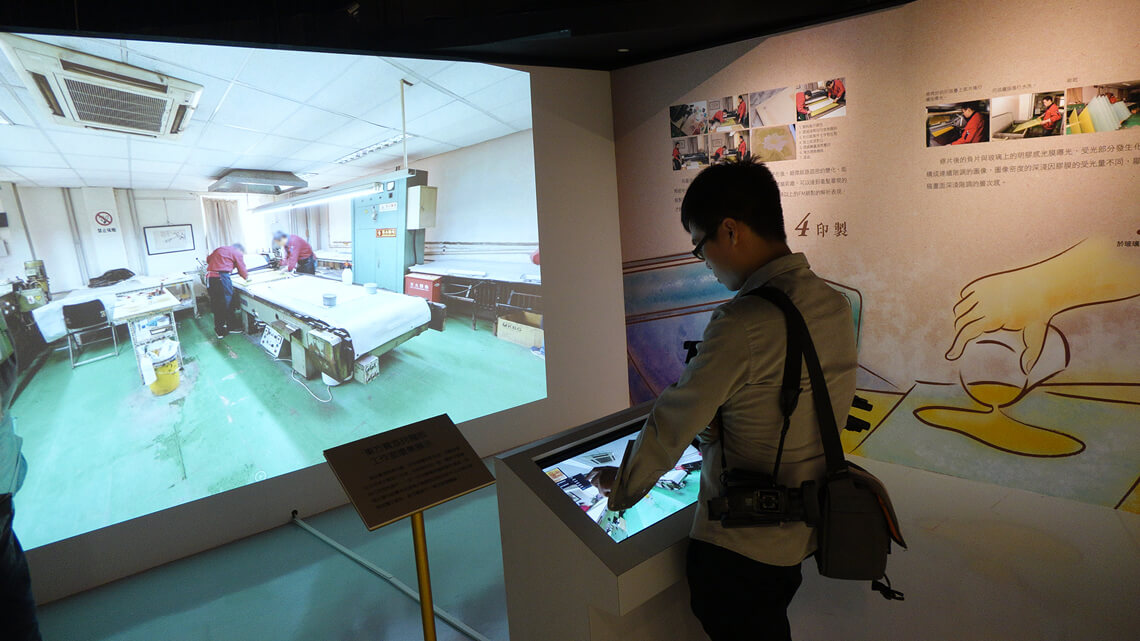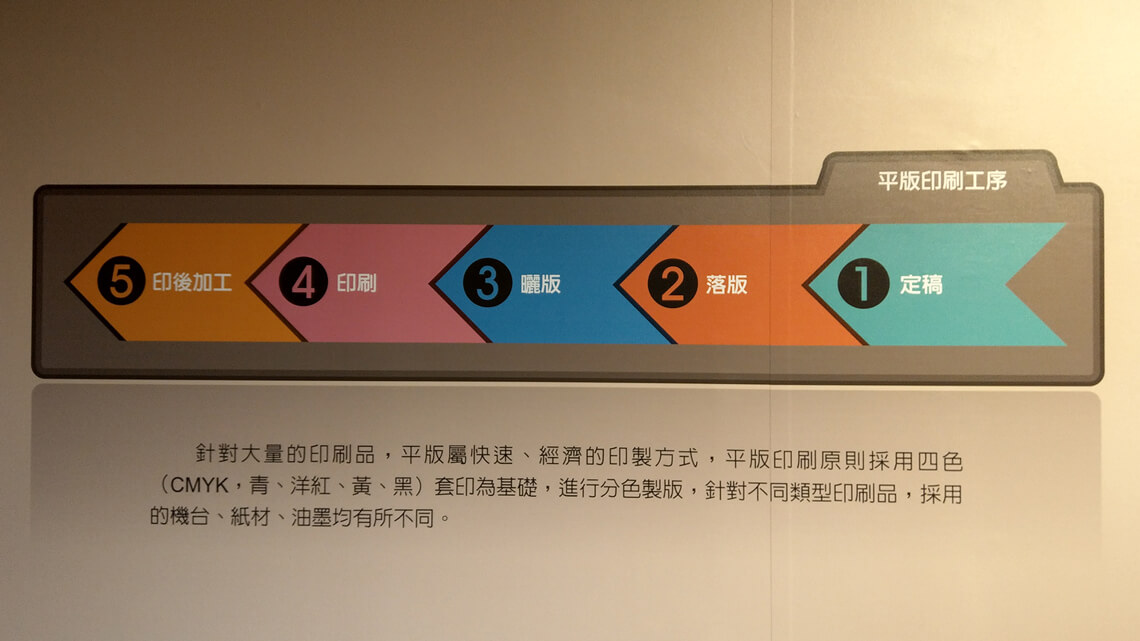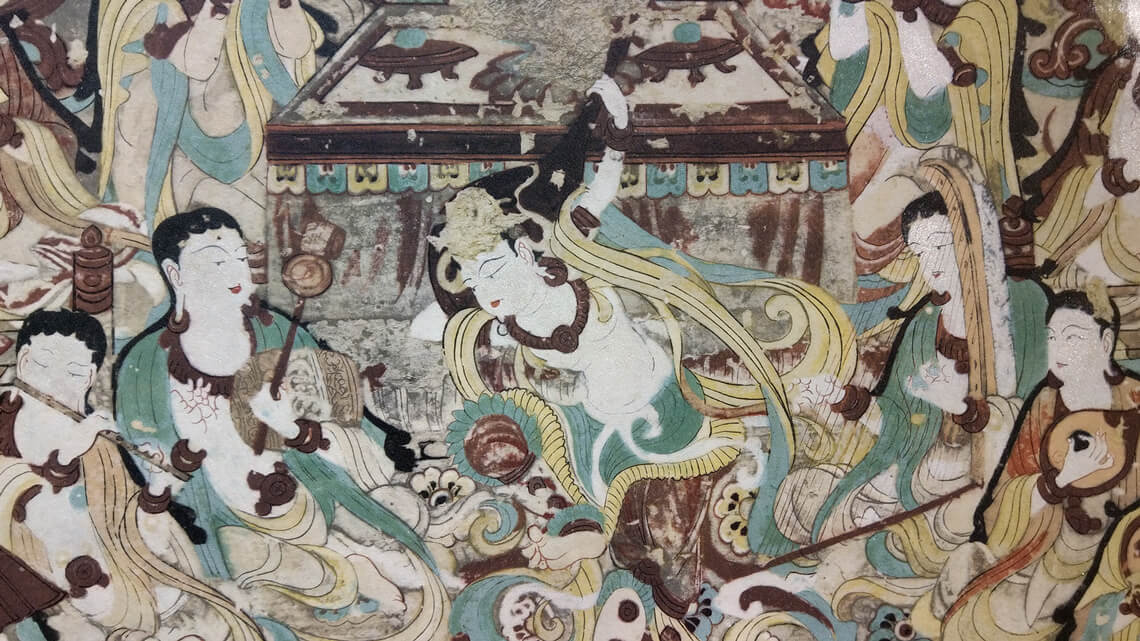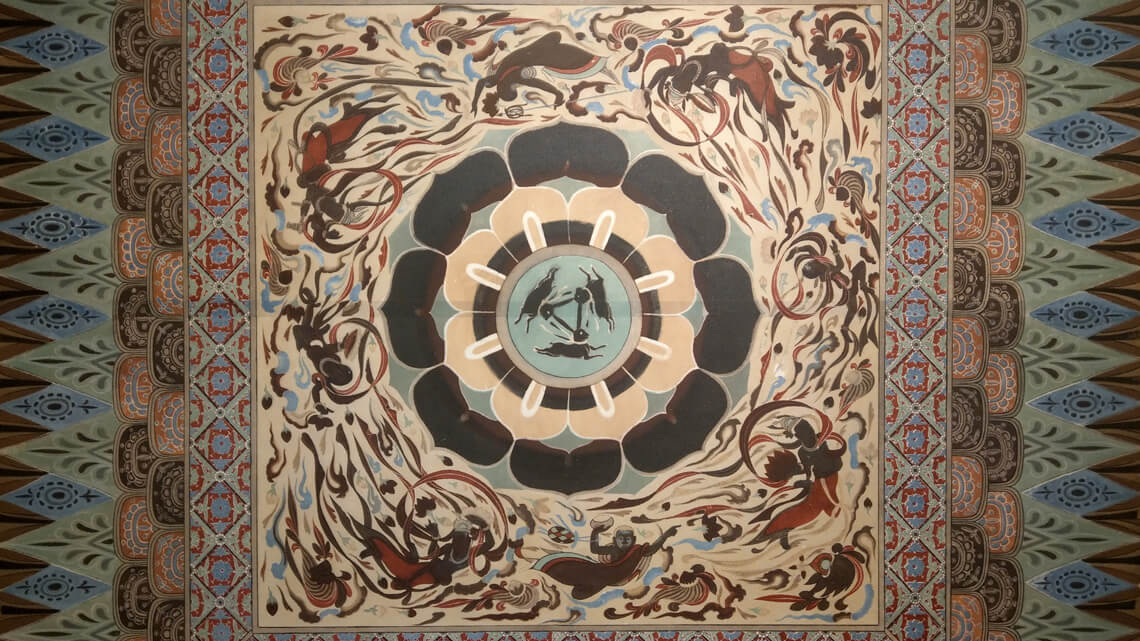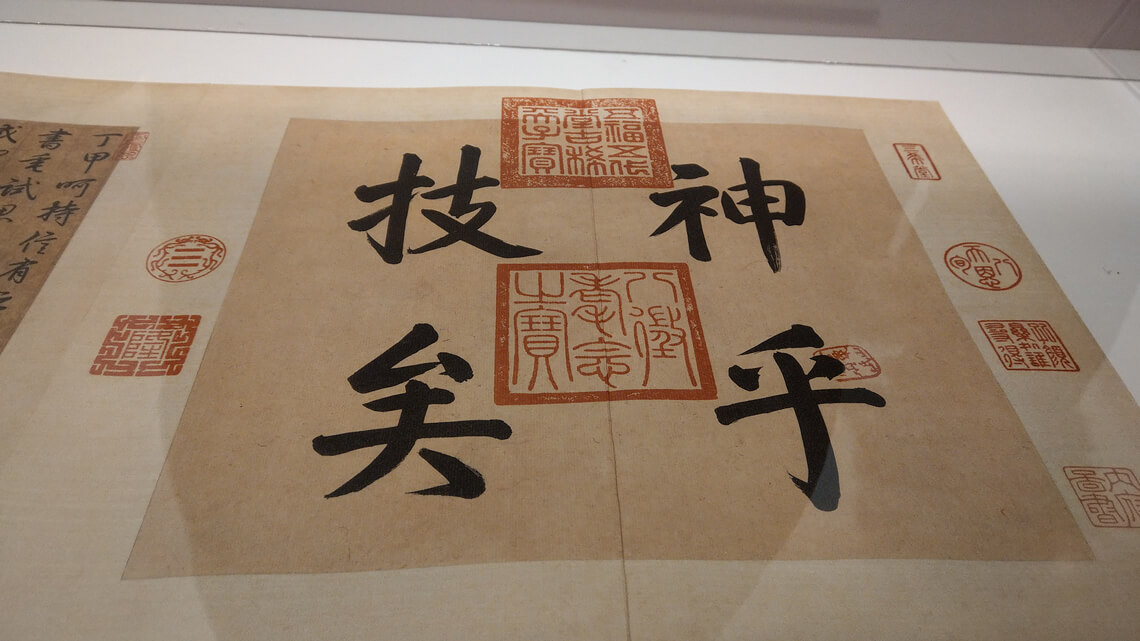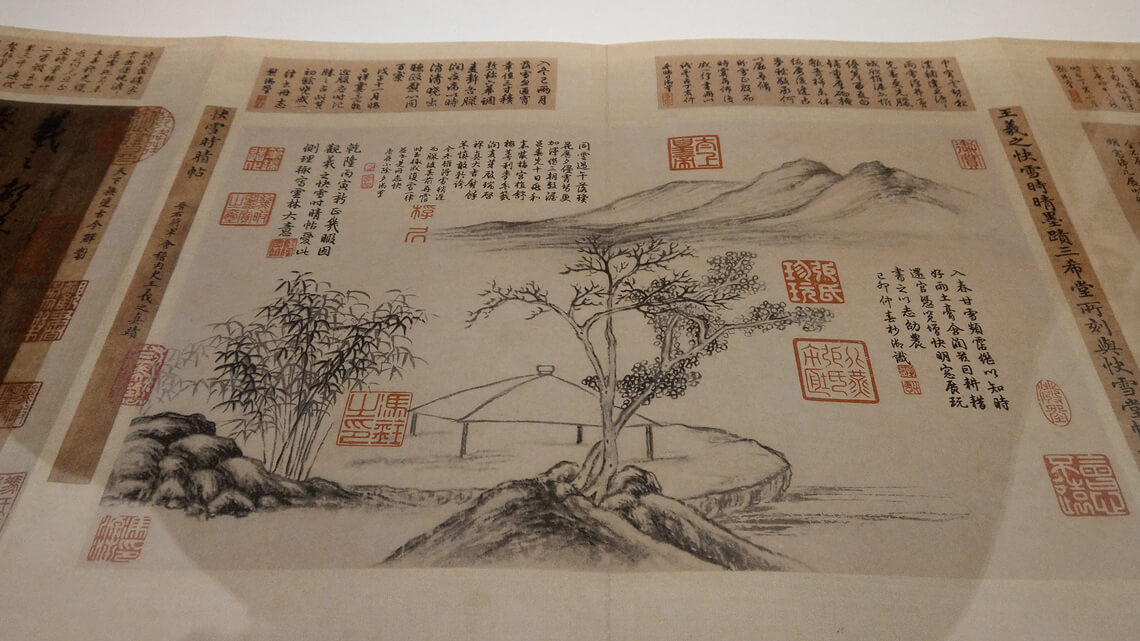Collagraphy At Its Best at the MWR
2018-03-31
Collagraphy At Its Best at the MWR makes accessible genuine appreciation of the beauty of the Dunhuang Cave Paintings
The Museum of World Religions (MWR) unveiled its special exhibition ‘Collagraphy At Its Best’ on March 29, 2018. The opening performance itself was a multimedia presentation of art per se. LI Ron-Ron of the Dunhuang Energy Art Society led the organization’s dancers to deliver a wonderful impression of Bodhisattvas in various positions with different hand gestures as originally captured in ancient paintings at the Dunhuang Caves, only revived by virtue of works of exquisite Collagraphy that make up the theme and content of the special exhibition freshly debuted. The opening show was thus a feast to the senses of sight and sound that blends paintings, dances, and music to offer a glimpse into the beauty and mystery of the Dunhuang Cave Paintings.
As a special exhibition at the MWR, it goes without saying that its theme is religious and it reflects well the bulk of cave paintings at Dunhuang. The particular significance of the cave paintings is two-fold, in that they are a unique representation of mutual influence between Mahayana and Tibetan Buddhism in terms of religious painting and art history. And the corner-stone of the showpieces, ie the Thousand-Handed Avalokitesvara Bodhisattva, stands out for no less than two reasons. The Ling Jiou Mountain (LJM) Buddhist Society under Dharma Master Hsin Tao pays special tribute to Avalokitesvara Bodhisattva in particular. More interestingly, furthermore, the special exhibit can be viewed in a way as a warm-up to a grand event in the pipeline for honoring Avalokitesvara Bodhisattva.
Celebrated as a UNESCO World Heritage site, the Dunhuang Caves belong as one of the most valuable cultural discoveries of the 20th century and on the must-see list of many world travelers. The richest and aesthetically most valuable fresco paintings at the Dunhuang Caves are those unique ones older than a millennium, which inevitably suffer oxidization-triggered erosion over time. To ward off further damages to the ancient paintings, sections of the Caves remain closed to the public and the overall illumination under 50-lux for protection. Replicas by way of Collagraphy thus offer a closer look at the original that one can hardly access even on the actual site. The 15 Dunhuang paintings reproduced via Calligraphy, therefore, will effectively shorten the distance on the viewers’ way of artistic appreciation and an aesthetic experience.
Collagraphy is the printmaking process derived from Collotype as a dichromate-based photographic process first developed in Germany in 1856, which involves four basic steps from photography, over plate-and substrate-making, to press printing. The know-how demands highly mature craftsmanship and experiences, with the production process both labor-intensive and time-consuming. As only natural minerals are employed for colors, Collagraphy replicas are exquisite in tonal effects and vibrant colors, and almost unsurpassed in capturing the shades of the ink as well as the flair of the brushwork that are most treasured in Chinese painting and calligraphy.
Four parties each in the public and the private sectors join forces in making the special exhibition possible. The Central Library, Dr Sun Yat-sen Memorial, Chiang Kai-shek Memorial, Museum of Taiwan Literature shoulder the role of the organizers, whereas BaoJi Cultural Broadcast (Beijing), LiangYi Cultural Enterprise, DaiSheng ShangFang Publishing, and TTOOPP Fine Art Solution are the co-organizers. 40 works in total are on display at the special exhibit “Calligraphy At Its Best”, which lasts until June 10, 2018.
Performance of the Wu Xin Dunhuang Dance Troops announced the opening of the special exhibition. Choreography of the Dunhuang-themed dance derived its body movement and hand gestures from the Caves’ famed celestial creatures - mostly angelic beings floating in the air and playing music. With the dance performed in front of the Thousand-Handed Avalokitesvara Bodhisattva - its Collagraphy replica to be exact - the intended is obvious, and the association netting the desired effect to elevate the audience to a plateau of aesthetic appreciation of fresco art.
CHEN Guo-Ning, Director of the MWR, pointed out at the opening of the exhibit that the show title “Collagraphy At Its Best” properly highlights different components and aspects of the special exhibition. Collagraphy as a reproduction technology is truly unique for re-capturing the finest details and nuances of the original, thereby almost reviving the work back to life, and therefore entirely incomparable from duplicates and copies using other techniques. For museum curators and visitors alike, the Collagraphy replicas remain relevant because they defy limitations of the space, while physically embody doubles of the time. As such, they provide effective means to disseminate cultural treasures and allow copies of popular museum collections to enrich people’s daily life. Director Chen borrowed an art historically famous praise for an analogy to the case in point and refer to Collagraphy as ‘divine skills’ - the praise Emperor Chien-Lung bestowed upon one of the most celebrated calligraphic work throughout the ages, namely the ‘Sunny Snow Post’ by Wang XiZhi.
Guests of honor on the opening day included LIN Bo-Ting, former deputy director of the National Palace Museum in Taipei, and PENG Wei, Secretary General of the Chinese Art Protection Association. LIN highlighted the aspect that quality replicas can both greatly impact the landscape of loan exhibitions while function as an efficient vehicle for education and promotion. PENG, on the other hand, stressed the practicality of replicas from the viewpoints of preservation and dissemination. Both speeches were warmly received with positive feedback from the audience.
The exhibit covers three topics of interest and they are respectively “Dunhuang in Motion”, “Religious Classics Revisited”, and “Reproducing National Treasures of Paintings & Calligraphy”. Of the cave paintings from Dunhuang, the ‘Thousand-Handed Avalokitesvara Bodhisattva’, the ‘Three Rabbits Caisson’, the ‘Heavenly Rhythm of the East’, and the ‘Lute-playing with back-hand’ are top-notch works of fresco paintings from the Buddhist grottoes. Chien-Lung Emperor was a great art patron and assembled 3 top-of-the-line calligraphic masterpieces to adorn his already amazing collection. Thanks to the Collagraphy know-how, the 3 pieces can be viewed and appreciated together as if we were the Emperor himself … A Yuan dynasty version of the Diamond Sutra and a Ming dynasty rare book bearing the title ‘Deciphering the Art of Su Dong-Po’s Poetry’ are from the prize collection of the National Library, but hardly ever on public display. From the Sun Yat-sen Memorial we see fine examples of the two common subjects Dr Sun put down in calligraphy most often: ‘fraternity’ and ‘under the sky, all is public’ (the world belongs to the public). In sum, museum visitors are treated to a broad spectrum of interest when checking out “Collagraphy At Its Best”.
Curator of the exhibit, CHONG Wei-Kai, pointed out that a royal study (‘The Hall of the Triple Rare Gems’) was dedicated to the afore-mentioned 3 calligraphic masterpieces, the ‘Sunny Snow Post’, the 'Mid-Autumn Post’, and the ‘Bo-Yuan Post’. But the turn of history set them apart and they are now kept separately by the Palace Museums in Taipei and in Beijing respectively. It’s hardly possible for anyone to see these 3 masterpieces all at the same time given the circumstances. However, the impossible was made possible thanks to the Collagraphy know-how.
Copies have always been made by imitation, via rubbing, and through other methods. Copies help prolong the lifespan of artwork and they help promote the popularity of cultural assets. As a member of the museum community in Taiwan, the MWR considers it its responsibility to promote understanding of the different ways of reproduction by Collagraphy, lithography, inkjet printing, etc. The special exhibit “Collagraphy At Its Best” awaits your visit.
Notes : Collotype vs. Collagraphy
